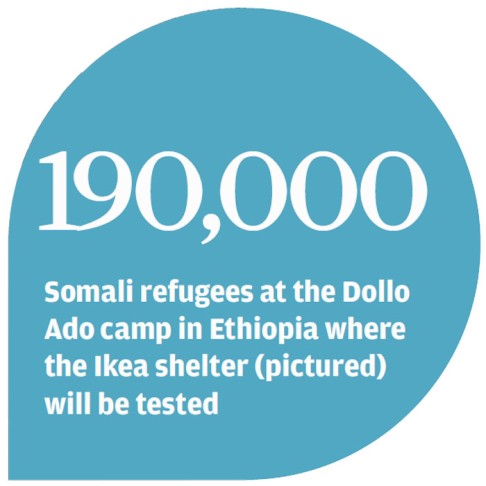
Ikea Foundation develops flat-pack home for refugees
Furniture maker Ikea develops hard-wearing and comfortable shelter that may see millions of world's displaced families ditching their tents

More than 60 years after the United Nations passed a convention pledging to protect refugees, little has changed about the way they are sheltered - until now.

Just like the coffee table or nightstand sitting in your home, the Ikea shelter is flat-packed, requires no tools to assemble, and can be taken apart and rebuilt again elsewhere.
Instead of canvas flaps, the shelter is made up of hard panels, which stand up better against harsher climactic conditions and offer more privacy.
The innovation heralds a new era of refugee assistance, one where the UN approaches the private sector for ideas and investment, not just donations.
If the shelters work, the design will be made available by Ikea to other companies for commercial production, while the swelling numbers of refugees from conflicts like those in Syria will have a more humane place to call home.
"We've been working on this for three years and it's … a significant investment," said Per Heggenes, head of the Ikea Foundation. "[We] hope this will be a product that can be manufactured commercially and offered in the market to all organisations dealing with emergency and disaster situations."
An estimated 3.5 million of the world's refugees - civilians driven from their homes and across international borders by conflict - are living in tents. Searching for a better alternative, the Refugee Housing Unit, a Swedish design firm aimed at improving the living conditions of displaced persons, approached the Ikea Foundation in 2010.
Ikea reached out to the UN High Commissioner for Refugees (UNHCR) and the initiative was born. Each of the Ikea shelters is designed to house one family.
They employ technologies to keep the interior cool by day and warm at night and a solar panel on each provides electricity.
"The new shelter has the potential to provide a more dignified temporary housing solution to refugees," said Olivier Delarue, UNHCR's senior adviser on private sector partnerships. "Essentially it could be a temporary home until people are able to return to their place of origin."
The full range of benefits - and drawbacks - will not be completely known until the prototype is field-tested next month.
Several shelters will be introduced to the Dollo Ado refugee camp in southeastern Ethiopia, which houses approximately 190,000 Somali refugees. The site was chosen in part because of its harsh conditions.
"It is critical to set the units in a harsh environment to have feedback on their technical resistance," said Delarue. "We also want refugees' views on the cultural suitability of the units."
The testing phase is supposed to take between four and six months, with adjustments made before the shelter goes into production. Until then, it won't be known whether the shelter will be suitable for the needs of those living in camps.
"We don't know enough to [say] whether it is an ideal solution yet," said Professor Alexander Betts, an associate professor at the University of Oxford's Refugee Studies Centre and the director of the Humanitarian Innovation Project. But he added: "There are reasons to believe it's exciting.
"The idea of moving beyond the usual tent structures … that often characterise that sort of terrain in the Horn of Africa, to provide something more durable, more sustainable."
The shelters are more costly than typical refugee housing, but if enough are produced then the cost will be lowered to just above the price of tents - and they last up to six times longer.
But this process may be speeded up to help ease the pressure of continued refugee flows out of Syria.
"We have also been testing the shelters in Iraq and Lebanon," says Ikea's Heggenes. "[We] decided to move from just testing it in Dollo Ado to testing it in all three areas, at the request of [the] UNHCR because the needs are so great in and around Syria."